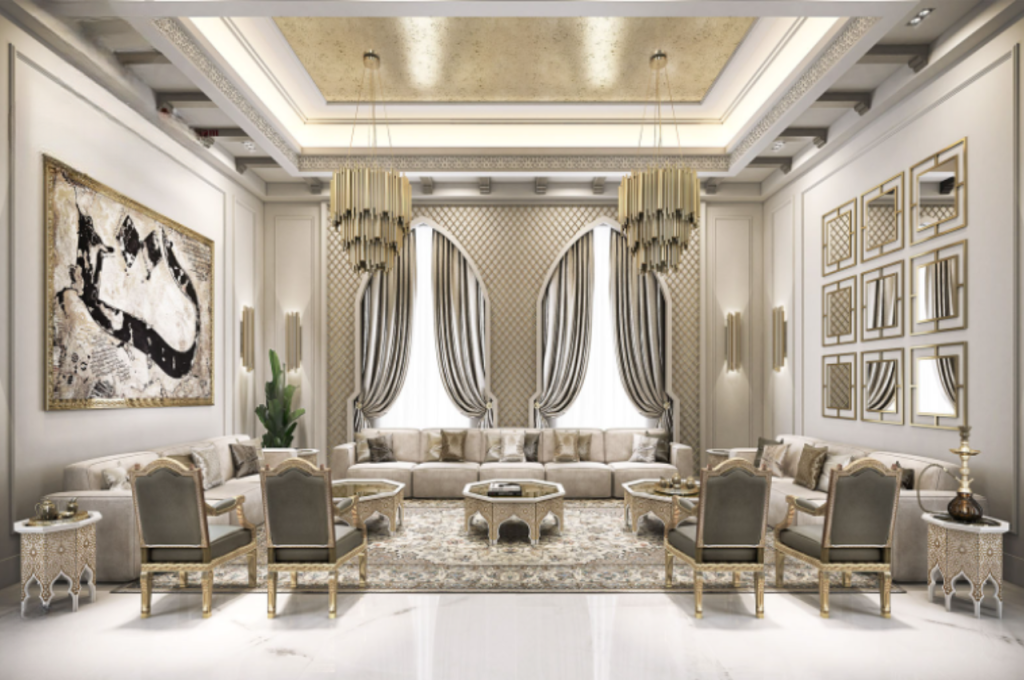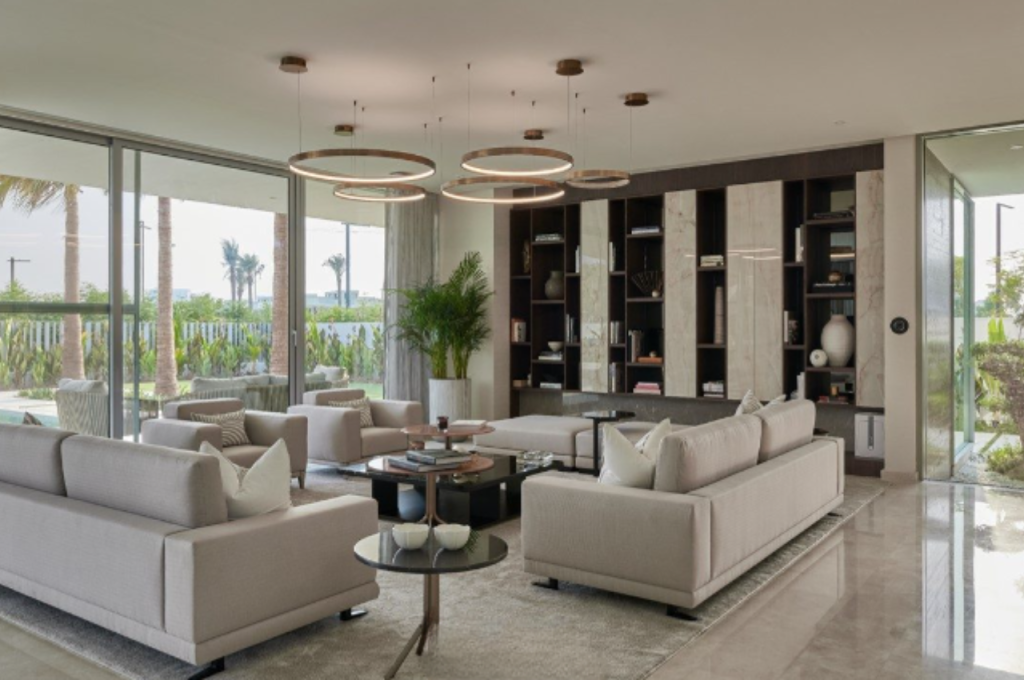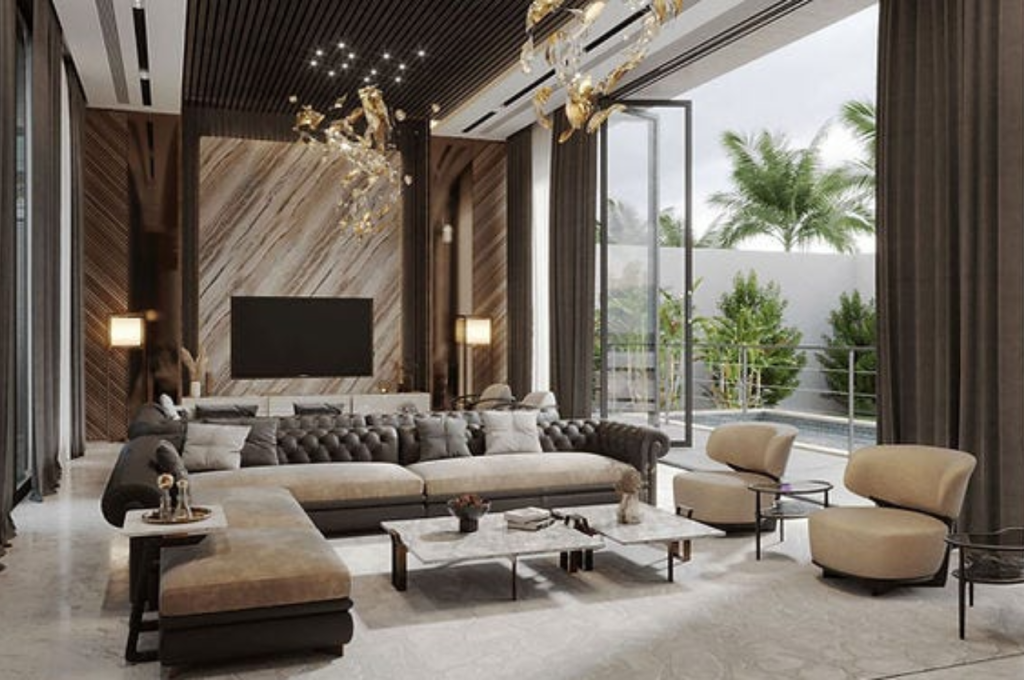An Interior Design Consultation is a professional service where designers assess the client’s space, needs, and desires for their ideal living or work environment. During the consultation, designers provide suggestions on color schemes, furniture selection, decor, layout, lighting, and more, creating a cohesive and functional space.
The goal is to help clients achieve the desired aesthetic appeal while maximizing functionality within their budget. The consultation can take place at the client’s home or virtually, via online platforms. Designers will analyze the space, take measurements, and listen to the client’s wishes.
Afterward, they’ll create a comprehensive plan encompassing all aspects discussed. The consultation fee will vary, depending on the complexity of the project and the designer’s level of experience. An Interior Design Consultation is the best way to improve any interior space.
The Importance of Interior Design
Interior design consultation is crucial for creating a functional, comfortable, and aesthetically pleasing space. With the help of an expert interior designer, you can avoid costly mistakes and achieve your desired look and feel for your home or office.

Interior design is the art and science of enhancing the interior of a space to make it visually appealing and functionally efficient for the people using it. It is more than just arranging furniture and decor items. Interior design is crucial in creating a comfortable and inviting environment that reflects your personality and style. Moreover, it plays an essential role in improving the quality of life by enhancing the functionality and usability of a space.
Why Interior Design Matters
Interior design matters because it has a significant impact on how we feel about and interact with our spaces. A poorly designed space can cause stress, discomfort, and even physical harm. In contrast, a well-designed space can have a positive effect on our well-being and provide an aesthetically pleasing and practical environment. Interior design is not just about aesthetics; it is about functionality, safety, and sustainability.
The Benefits of Good Interior Design
Good interior design can transform the look and feel of any space. It can elevate the functionality and overall experience of a room, creating a positive impact on our moods, productivity, and overall well-being. Some of the benefits of good interior design are:
- Increased comfort: A well-designed space can make you feel relaxed and comfortable, enabling you to function better.
- Better functionality: Proper interior design enhances the functionality of a room, making it more practical and efficient.
- Reflects your personality: Good interior design reflects your personality, creating an environment that is unique to you.
- Improves resale value: A well-designed space can increase the resale value of your property.
- Enhances the quality of life: Good interior design can improve the quality of life by creating a space that is not only visually appealing but also practical and safe.
Interior design plays a vital role in creating a visually appealing, practical, and functional space that reflects your personality. Investing in good interior design can provide long-lasting and tangible benefits to your well-being and quality of life.
Getting Started With Consultation
Starting an interior design consultation is easy and stress-free with the help of experts. You’ll be able to discuss your requirements, assess your space, and create your dream design with the guidance of a professional.
If you’re thinking of updating your home décor, an interior design consultation is an excellent place to start. Before diving into the design process, it’s essential to get a consultation from a professional designer to ensure that your ideas are feasible, functional, and stylish. In this blog post, we will discuss everything about getting started with an interior design consultation, including finding the right interior design professional, preparing for your consultation, and what to expect from the process.
Finding the Right Professional
Finding the right professional is a crucial part of starting your interior design process. With several design firms available, it can be challenging to select the right one. When searching for an interior design professional, look for their area of expertise, knowledge of design trends, and experience in designing spaces similar to your requirements. Reading through reviews and asking for referrals from friends, family, or colleagues can help narrow your search.
Additionally, you can check their portfolio, whether online or in-person, to gauge their previous work and determine if they are the right fit for you. Ensure that the designer’s style aligns with your vision and aesthetic preference. A successful project reflects your style and personality while elevating your home’s functionality.
Preparing for Your Consultation
Before the consultation date, it is essential to prepare adequately for the meeting. First, identify your goals, including your budget, timeline, and desired outcome. Jot down your ideas and collect magazine clippings or photos that inspire you. These visuals can help the designer understand your preferences and design style. Prepare a list of questions to ask the designer, such as their design approach, how they handle unforeseen circumstances, and how they ensure the project stays within budget. Having a clear plan in place for your design goals and a well-thought-out list of questions will help ensure that your consultation is productive and informative.
Assessing Your Space
Assessing your space is a crucial step in an interior design consultation. It involves understanding the size of the area, evaluating the existing furniture and decor, and identifying areas for improvement while considering the client’s preferences.
Understanding Space Planning
Assessing your space is the first and most crucial step in interior design consultation. Space planning entails a detailed assessment of the space, from its size, layout, and furniture placement to lighting and color, and identifying the potential it holds. For instance, understanding the purpose of the room and how it will be used will enable you to create a functional and aesthetically pleasing interior space.
Identifying Your Space’s Potential
Once you understand the space’s limitations and potential, identifying the perfect furniture and accessories for the space can be easily achieved. Each item you choose should fit the space precisely, without overcrowding it, allowing for easy movement. A small room calls for small-sized furniture, while a larger space requires more significant and well-coordinated furniture. Identifying the potential of a room is essential in creating a cohesive design that meets your needs while maximizing your space’s potential.
Additionally, it’s vital to incorporate your personality and preferences into the design. After all, you are the one who will use the space most of the time. The design scheme should reflect your taste while ensuring functionality and aesthetic appeal are not compromised. Assessing your space will provide you with a foundation for a well-structured and coherent design. It enables you to create a functional and visually appealing space that reflects your personality and maximizes the potential of the room.
Choosing Design Elements
Interior design consultation plays an important role in creating a stylish and functional interior space. One of the key aspects of the consultation is choosing the design elements that will bring your vision to life. From color schemes to furniture selection, every detail matters when it comes to transforming your space into a beautiful and comfortable haven.

Color Schemes and Palettes
A color scheme can make or break the look and feel of your new interior design. Whether you want to create a cozy and warm atmosphere or a cool and serene vibe, choosing the right colors is vital. You can utilize a color wheel to select complementary colors, such as red and green or blue and orange. Alternatively, you can opt for a monochromatic or analogous color scheme for a more cohesive and sophisticated effect.
Selecting Furniture and Decor
The furniture and decor you choose for your space will have a significant impact on the overall ambiance. When selecting furniture, consider the size of your space, your style, and the functionality of the pieces. Artful arrangements of decor can make your home feel inviting and complete. Artwork, mirrors, textiles, and greenery are all examples of decor elements that can enhance the aesthetic appeal of your space.
During the interior design consultation, be sure to discuss your preferences and requirements with your designer. They can assist you in choosing the right color schemes, furniture, and decor to suit your style, needs, and budget to transform your home into your dream space.
Maximizing Functionality
One of the primary goals of interior design is to create a space that not only looks great but also functions well. A well-designed space should maximize functionality, making it easier for you to go about your day-to-day activities.
Creating A Layout that Works
The layout of your space plays a critical role in determining how functional it is. During an interior design consultation, our team will work with you to create a layout that works for your lifestyle. We’ll take into account factors such as traffic flow, the placement of furniture, and the location of important functional elements like electrical outlets. By creating a layout that works specifically for you, we can help ensure that your space is both beautiful and functional.
Designing for Your Lifestyle
At its core, the practice of interior design is about creating spaces that enhance our lives. That’s why it’s so important to design with your lifestyle in mind. During an interior design consultation, we’ll take the time to get to know you so that we can better understand your needs, preferences, and habits. From the materials we select to the layout we create, every element of the design will be tailored to your unique lifestyle. By designing with your lifestyle in mind, we can help ensure that your space meets your practical needs while also being an enjoyable place to spend time.
Working With A Budget
If you’re planning to hire an interior designer, and you have a budget in place, you’re in the right direction. Working with a budget gives you a good starting point and sets realistic expectations. With the right approach, you can achieve your design goals without overspending. In this post, we’ll explore some tips to help you work with your interior designer on a budget.
Setting Realistic Goals
Before you begin, it’s important to have a clear idea of what you want to achieve. Define your design goals and identify the areas of your home that need attention. Communicate your ideas with your interior designer. They can help you prioritize and find creative solutions to achieve your goals within your budget.
Identifying Cost-effective Solutions
Working with an interior designer doesn’t always mean spending a fortune. A good designer can help you identify cost-effective solutions that can save you money in the long run. They know where to best allocate your budget and can suggest alternative materials and finishes that still achieve the desired effect. Don’t be shy about expressing your budget concerns; your designer will work with you to find the perfect solution.
Interior design is not exclusive to the rich and famous. By working with a designer, you can create your dream home without breaking the bank. Stay realistic with your budget and communicate your goals clearly with your designer. Together, you can transform your space into something stunning.
Bringing Your Vision to Life
At our interior design consultation, we help you bring your vision to life. Our team of experts will work closely with you to understand your needs and preferences and recommend the best design solutions to achieve the desired look and feel of your space.
Let’s create a space you’ll love.
During an interior design consultation, you share your vision and aspirations with your designer. You describe what colors, textures, and styles you prefer, and how you want your space to feel. Your designer then translates your vision into a concrete design plan that meets your aesthetic and practical needs.
Collaborating With Your Designer
To bring your vision to life, you need to work closely with your designer. Collaborating with a skilled designer can help broaden your creative horizons and explore ideas that you might not have considered on your own. During the consultation stage, your designer will ask you a lot of questions to crystallize your vision, clarify your preferences, and identify your goals for the space. In turn, you can provide feedback and ask questions to ensure that the design plan aligns with your vision and tastes.
Executing Your Design Plan
Once the consultation stage is complete, it’s time to execute your design plan. This is where your designer will roll up their sleeves and start transforming your space into a reality. The designer will select furniture, fixtures, and accessories that align with your design plan, and arrange them to create a cohesive and aesthetically pleasing space. They will also consider the practical aspects of the space, such as traffic flow, lighting, and functionality. By working closely with your designer throughout the process, you can ensure that your vision is realized and that your space meets your unique needs and requirements.
Maintaining Your Space
Interior design is an art that involves creating functional and aesthetically appealing spaces. An interior design consultation can help you achieve the desired look that is both practical and in line with your style. Once you have your space designed to your satisfaction, it’s important to maintain it so that it remains in pristine condition for as long as possible.

Tips for Long-term Success
- Regular cleaning and organization of your space are key to maintaining its look and feel. With regular upkeep, you can avoid clutter build-up and keep your space looking fresh and tidy at all times.
- Invest in high-quality materials and furniture pieces that are durable and long-lasting. This will save you money in the long run as you won’t need to replace items frequently.
- Stick to a color scheme that is timeless and classic. Neutral colors are a great option for spaces that you want to maintain for a long time as they do not go out of style easily.
Adjustments and Updates
Over time, you may need to make small adjustments or updates to your space to keep it looking fresh and up-to-date.
- Switch out throw pillows and decorative accessories to give your space an instant update.
- Try new curtains or blinds to change the lighting and atmosphere of your room.
- Consider a new paint color to freshen up your space without changing the furniture or decor.
By following these tips, you can maintain your interior design consultation’s look and style for years to come. By keeping your space organized and making small updates, you can ensure that your space remains practical and aesthetically pleasing.
Conclusion
An interior design consultation can provide you with invaluable expert advice on transforming your living space. By understanding your preferences, needs, and budget, a professional designer can recommend the right color schemes, furniture pieces, and decor elements that fit your unique style and taste.
Whether you’re looking to add some coziness, style, or functionality to your home, a consultation session is a great starting point. So, if you want to elevate your living space and get your dream home, consider scheduling a consultation with a reputable interior designer today.

